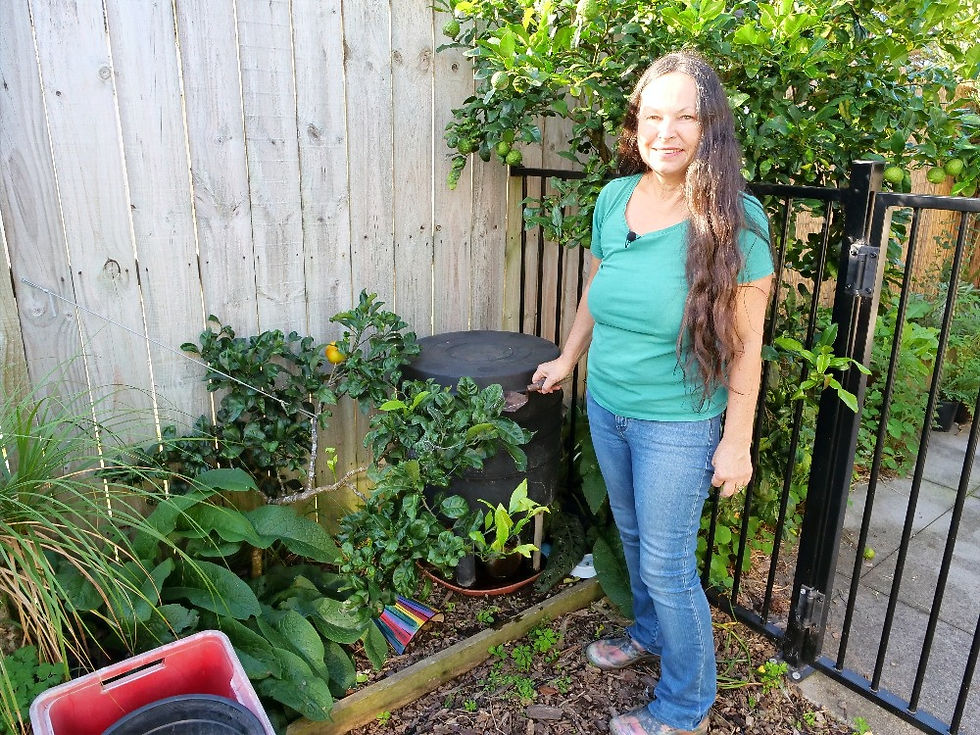Seed Sprouting
- Toni Kenyon

- Jun 20, 2021
- 4 min read
Updated: Mar 25, 2022

I spend a lot of time standing on my ‘seed box’ telling you why you should be growing greens—even if you have little or no space to garden.
Sprouts and micro greens are a great way to reap the immediate benefit of home grown greens in your diet.
They’re quick, easy and (obviously) you don’t need a garden—although you can grow micro greens in the garden (as long as you have great protection from the little critters (slugs, snails, sparrows).
I love birds, but I didn’t realise how devastating the little winged ones can be when they get into your seedlings. I thought last winter that it was the slugs and the snails that were devouring my newly planted out seedlings, but it turned out to be hungry wild birds who were doing the damage. I’ve seen an incredible increase in productivity since I’ve been protecting my garden beds from my own chickens. I do leave out some greens for my own birds and the local wildlife—so do not fear—no-one misses out.
Anyway, I digress—walking you up my garden path—as is my want.
Seed Sprouting 101
Most of us have done this, right? Probably with our children, or at primary school. If you rummage through the dusty passages of y0ur mind and locate those memories of early childhood, you might remember making a hedgehog.
You chopped the top off a large potato--or soaked a wad of paper or cotton in water-- sprinkled some mustard and cress seed on top and (wonder of wonders!) green prickles began to grow on your little hedgehog.
Or maybe you filled a large glass jar with paper and slipped peas or beans down the side against the glass. You waited and watched and, low and behold, the seeds swelled and started to put roots down the side of the glass and green tops grew out of the top of the jar.
That’s seed sprouting.
There’s not a lot to it.
We have a jar on the bench in the kitchen at home. It has a mesh lid that screws on top so I can soak my seeds and then tip out the water without losing the contents of the jar. Check out the video below for a full demonstration.
At any time, it has an assortment of the following in various stages of sprouting:
Peas
Lentils (green or brown)
Chick peas (Garbanzo beans)
Mung beans
Twice a day, I fill the jar with fresh water, give the growing seeds a swirl, tip the water down the sink and put the jar back on the bench.
When my seeds have sprouted as far as I want them to sprout, I rinse them off again, put them in a container with a paper towel at the bottom (to catch any excess water) and pop them in the fridge.
We use them fresh on salads and sandwiches, or we throw them into soups, stews and stir fries.
There are also amazing combinations of seeds that you can purchase to sprout at home. I often purchase a nice ‘hot’ mix that includes radish, fenugreek, mustard, red cabbage and alfalfa, or I mix my own combinations dependant upon what kind of flavour I want to create.
I have a much smaller sprouting dish (with a strainer below to allow the excess water to drain) and a lid to keep the seeds from drying out. I use this for the much smaller seeds—although I do sprout them sometimes in my jar.
Smaller seed combinations tend to grow into a huge ‘tumbleweed’ of sprouts that have to be carefully untangled when I want to eat them.
I try to keep seeds together that have similar sprouting times as well. That’s sometimes a matter of experience—working out what sprouts when—but otherwise, you can stick with the commercial sprouting seed packets that take the guess work out of everything for you.
What you need for sprouts:
Seeds/pulses of your choice
Jar with mesh lid or strainer to strain your seeds
Warm place (preferably in the kitchen, or somewhere you will see them)
The most important thing to remember is that your seeds/sprouts will need to be rinsed at least twice a day. If you forget to rinse your seeds/sprouts, they will begin to mould and rot and you don’t want to be eating mouldy, rotting food. Your nose will tell you if there’s an issue. Your seeds/sprouts should smell fresh and inviting.
What can I sprout:
Peas
Lentils (we always have these on the go—they’re great in winter stews and stir fries)
Chick peas (Garbanzo beans)
Mung beans (one of our favourites!)
Radish
Fenugreek
Mustard
Cabbage
Alfalfa
Broccoli
Celery
Clover
Kale
Onion
Pumpkin
Sesame
Sunflower
Any whole, GMO free, untreated seed can sprout. It should be raw and not roasted and it should not be seed that is produced for agricultural purposes. Sometimes these seeds are covered in preservative or treated to prevent mould forming.
Your job is to provide the right circumstances and you’ll have a bottle of nutritious, crunchy, tasty treats available in a few days.
NB: Seeds from the solanaceae (nightshade) family should not be sprouted and can be poisonous, so avoid trying to sprout sweet and hot peppers, eggplant, tomato and potatoes. Also don’t try sprouting rhubarb. If you’re unsure, do your research.
If in doubt, don’t sprout!
I especially love sprouting lentils, peas and chick peas (garbanzo beans) because it removes the need for me to soak these prior to cooking and it also releases a whole range of nutrients that would otherwise be lost to the cooking process.
So there you have it.
Give sprouting a go. I’ll go more in depth about Micro Greens next week.
Let me know what you’re sprouting.
Love & Lettuce,
Toni xx















Comments